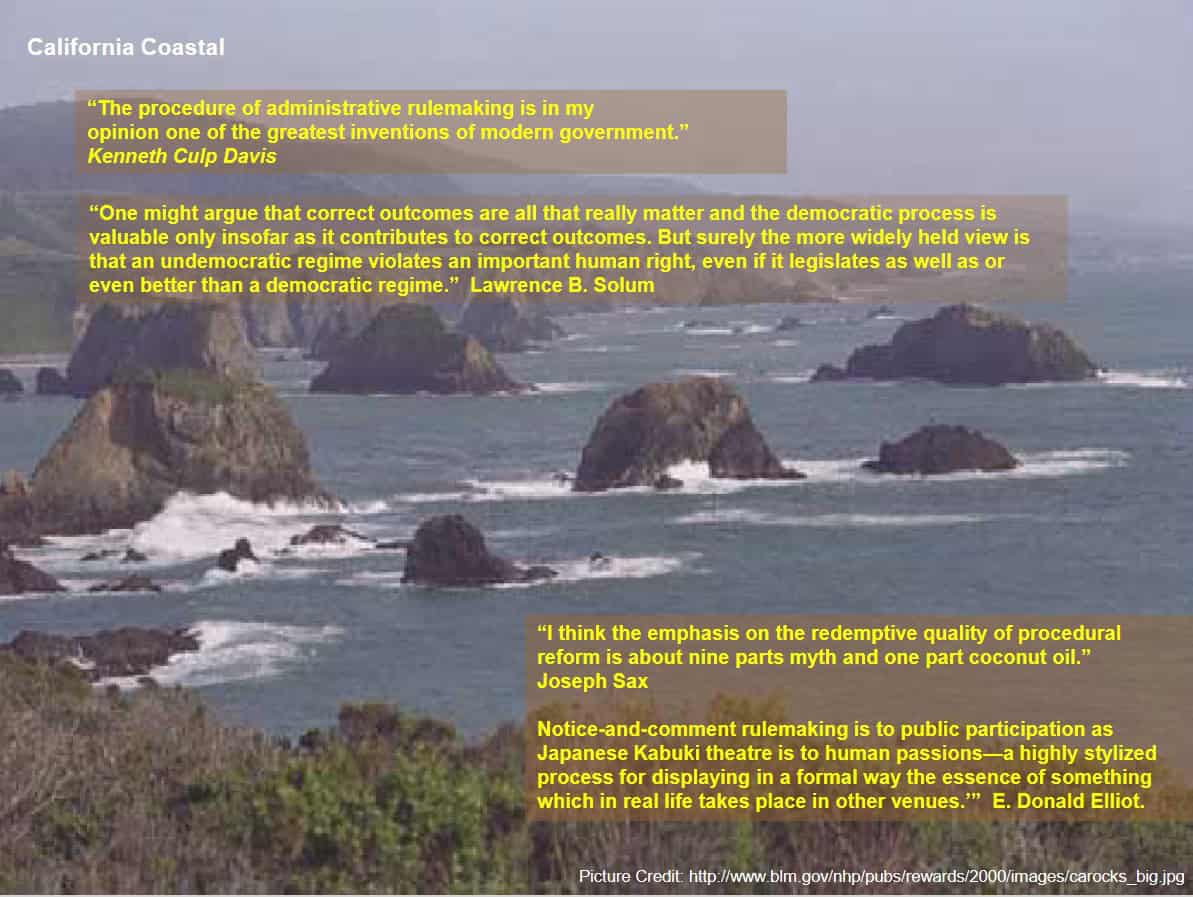Rich J. noted yesterday that public land laws are antiquated, which reminded me of this CU Law School conference at the 40th Review of the Land Law Review. At that time, the thoughtful and talented planner John Rupe and I helped our Regional Forester, Rick Cables with this presentation. This was during the period of the 2005-2008 Planning Rule. Many thanks to CU Law for keeping all this posted on their website.
John Rupe posted an excellent summary of the conference at TSW here.
Here’s one paragraph from John’s post:
The 1970 report led to the 1976 Federal Land Policy and Management Act (FLPMA). According to Charles Wilkinson, FLPMA was a textbook example of Congress taking the long view – carefully studying the problem through a commission, and then crafting a bill which addressed those concerns. He noted that the National Forest Management Act (NFMA) was very different – it went through Congress in less than a year because of a timber cutting crisis.
The speakers at the conference generally concluded that today’s political environment makes it difficult to repeat a 1970-type commission. Congress is too polarized. We may be too impatient to repeat the process that took six years from 1964 to 1970. There may not be a political sponsor like Wayne Aspinall, the Congressman from Colorado who pushed for the formation of the Commission as part of a 1964 compromise legislative package which enabled the package of the Wilderness Act. In addition, the problems today with public land management may not be grabbing the attention of the public, more concerned with the economy and other pressing matters.
Hmm… “too polarized” 14 years ago. I wonder (certainly I run in less political circles) if the idea of “we are too polarized” keeps us from taking steps, perhaps incremental, to hash out and perhaps heal disagreements. Words themselves have power, I believe, to lay tracks in our consciousness. I’d instead ask “how can we design a system to get away from polarization?”. If we had started with a small effort in 2010, where might we be today?
We could start with “what behaviors would we like to see in the next Admin that could help with that? or “what would be a tiny step that could be taken to develop a bipartisan process to remove the most problematic aspects of the current “mess o’ statutes”.
Anyway here’s a link to the conference, it’s full of interesting powerpoints and videos. Reflecting from 14 years on, we seem to have all the same issues.
Well, David Bernhardt (he of the Trump Admin) talked about oil shale, you don’t hear about that anymore. But not much about renewable and transmission buildout, and minerals were not strategic at the time.
Particularly with the current pressure toward Monumentizing, including what seems to be a massive media campaign, I’d like to draw your attention to the thoughtful presentation on Monumentizing by Jim Rasband: The Moral and Ethical Dimensions of Decision-Making on Public Lands: National Monuments and Beyond.
There’s also a set of slides of that presentation, with some quotes people might want to borrow for their own presentations. Note how the Solum quote is related a bit to our discussion earlier this week of litigation as policy setting.. rights talk rather than justice talk. Anyway, take a look at anything at the conference that interests you and we can discuss below.
